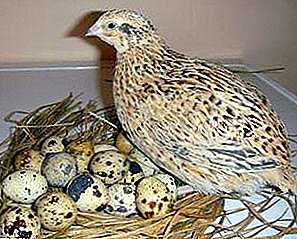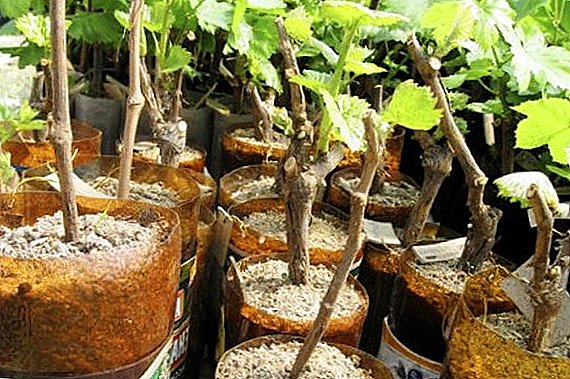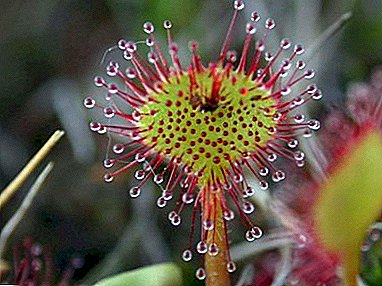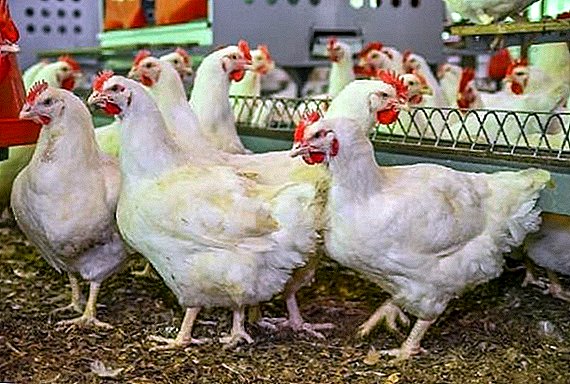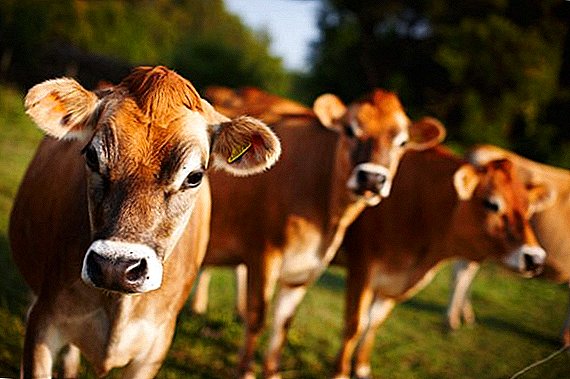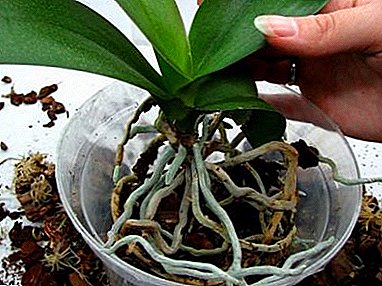 Rowing have many valuable qualities. But since they are a collective concept that personifies a whole genus of edible and poisonous mushrooms, most people bypass them. Even experienced mushroom pickers do not always take the risk of collecting such forest trophies, being afraid to confuse them with inedible brethren. Further in the article we will tell about the features and signs of yellow-brown rowing, places where it can be found, and useful properties.
Rowing have many valuable qualities. But since they are a collective concept that personifies a whole genus of edible and poisonous mushrooms, most people bypass them. Even experienced mushroom pickers do not always take the risk of collecting such forest trophies, being afraid to confuse them with inedible brethren. Further in the article we will tell about the features and signs of yellow-brown rowing, places where it can be found, and useful properties.
Edibility
Yellow-brown rowed botany credited to conditional edible mushrooms. They can be eaten in boiled, fried, stewed, dried, pickled, pickled and even frozen types. Many adore these dishes in combination with mashed potatoes and green onion feathers. Also, from these forest fruits, they prepare appetizers and all kinds of salads without boiling them.
Important! Poisonous ranks are not hallucinogens. If poisoning occurs, there is general weakness, nausea, vomiting, dizziness, gastrointestinal pain and diarrhea. Symptoms of poisoning manifests itself in 1.5-3 hours.
According to experienced mushroom pickers, ryadovki are inferior in taste to many of their fellows. This is due to a slight bitter taste of the fruit body, inherent in the old trophies. If you have not found young fungi and were tempted by the appealing look of a mature row, be sure to soak the harvest for the night. Experts attribute the cause of bitterness in the taste with the formation of mycorrhiza under coniferous trees.  Despite this deficiency, the mushroom often appears as the main nutritional component in different diets. Its chemical composition is very close to meat products, and the caloric content of the hundred gram portion is equal to the bowl of rosehip broth (20 kcal). Nutritionists advise for better digestion of carbohydrates to combine rows with pasta from durum wheat, buckwheat and rice porridge.
Despite this deficiency, the mushroom often appears as the main nutritional component in different diets. Its chemical composition is very close to meat products, and the caloric content of the hundred gram portion is equal to the bowl of rosehip broth (20 kcal). Nutritionists advise for better digestion of carbohydrates to combine rows with pasta from durum wheat, buckwheat and rice porridge.
Raw forest product can be stored in the refrigerator for no more than 3 days. If it is salted or frozen, the shelf life will last up to six months. And in dried or canned form, the billet will not spoil even in a year.
Did you know? Adherents of natural face and body care products use the yellow-brown line to treat acne and normalize the function of the sebaceous glands. To do this, the dried fruit body is ground to powder and added to traditional masks.
Synonyms and popular name
In scientific literature, this type of mushroom is designated as a yellow-brown row (Tricholoma fulvum). There is an opinion that the name comes from the properties of myco-formers with a specific color of the cap located in a row or in large groups.  In addition, in the process of learning the Swedish botanist Elias Magnus and the American mycologist Charles Hourton Peck introduced many botanical synonyms. If you show interest and want to learn more from specialized sources about the differences of these mushrooms, pay attention to following names:
In addition, in the process of learning the Swedish botanist Elias Magnus and the American mycologist Charles Hourton Peck introduced many botanical synonyms. If you show interest and want to learn more from specialized sources about the differences of these mushrooms, pay attention to following names:
- Agaricus flavobrunneus;
- Agaricus fulvus;
- Agaricus nictitans;
- Callistosporium marginatum;
- Clitocybe marginata;
- Gyrophila fulva;
- Monadelphus marginatus;
- Tricholoma flavobrunneum;
- Tricholoma nictitans.
In everyday life, yellow-brown rows are often called orange, brown and red-brown. All these names are associated with shades of mushroom cap. In addition, the name "plantain" is rare, which is due to the wide distribution of the species.
Did you know? One type of ryadovok - matsutake - very much appreciated in Japanese cuisine. Restaurant portion of a delicacy on the territory of the Land of the Rising Sun is estimated at about $ 150..
Botanical description
Yellow-brown rowing among other species of this genus is easily recognized by the high stem. But this is not the main landmark, which should pay attention during a quiet hunt. Let's take a closer look at this mushroom. 
Hat
This part of the fungus is often confusing inexperienced collectors. And all because it can be of various shapes: from flattened and widely spread to convex cone-shaped. But in any case, in the center of the cap a low tubercle must clearly enter. Due to this unpredictable shape, the diameter of the cap varies from 3 to 15 centimeters.
Familiarize yourself with the types of edible forest mushrooms: white fungus, volnushka, grudge, chanterelle, honey agaric, mossworm, oilers, boletus, russula, boletus, red mushrooms, shiitake, oak tree, govorushka.
Its sticky surface is characterized by a saturated yellow-brown color. Sometimes it may acquire reddish hues. The edges are always lighter than the center. In the rainy season, the cap is covered with a specific gloss. And when drying has a fibrous structure. On overripe specimens, it becomes scaly. 
Pulp
When you cut such a trophy, you will see a dense medium-fleshy structure of a rich yellow color (sometimes with brown impurities). Powdery smell and bitter taste is peculiar to edible fungus. 
Leg
Its length can reach 15 centimeters, and thickness - up to 2 centimeters. It has a regular cylindrical shape (sometimes it can expand at the base), a dense, strongly fibrous structure and a dry, smooth surface that is identical in color to the cap. During rains, stickiness appears on the leg.
Important! Mushrooms are hard to digest, therefore, are contraindicated for people with diseases of the gastrointestinal tract and gall bladder. With abundant consumption, even in an absolutely healthy person, indigestion may occur.
Records
This part of the yellow-brown ryadovki differs from the poisonous counterparts in light yellow or yellow-cream color. Sometimes brown spots and uneven edges appear on the hymenophore of mature mushrooms. In young specimens, the plates are densely grown, can be densely or rarely located. 
Seasonality and habitats
Rowing is not at all uncommon. The yellow-brown variety is often found in deciduous plantings, as well as under conifers. Mushrooms form a symbiosis with birches, oaks, beeches, pine. Meet one by one and large groups.
Mushroom season begins in August and lasts until mid-September.
Important! The main difference between poisonous rows and edibles is a fetid odor, flat forms and white color of caps.
What mushrooms can be confused
Today, botanists know about a hundred species of fungi from the genus ryadovok. Therefore, to make a mistake when collecting such trophies is easy. Yellow-brown variety, even experienced mushroom pickers are often confused with:
- Poplar rowing (poplar) - different white hymenophore. Grows under aspens and poplars. It is considered conditionally edible.
- Rowing white-brown (lachanka) - conditionally edible mushroom, characterized by a brown cap with dark veins. In such mushrooms snow-white flesh with no signs of yellowness.
- Rowing yellow-red (open pine) is characterized by a velvety dry hat with small red-brown fibrous scales. It is considered conditionally edible.
- Rows openkovidnoy (tied up) - obvious signs of this conditionally edible fungus are heterogeneous color caps. It can be yellow-brown, reddish and even greenish shades. Prefers poor soils under pines.
- A row of soapy is an inedible fungus, distinguished by its fruit-soap smell and olive impurities in the color of the cap. When cut, the yellowish flesh begins to redden.
- Rowing sulfur (sulfur yellow) is a poisonous, but low-toxic fungus. Most often confused are old specimens, on the cap of which a rusty-brown hue appears. The young fruit body is characterized by a gray-yellow color. Cutting such a trophy, you immediately feel the unpleasant pungent smell of tar, hydrogen sulfide or acetylene.






Read also about other types of rows: purple, green, gray.
Benefit and harm
To judge the benefits or harms of these forest gifts, it suffices to analyze their chemical composition.
It contains:
- polysaccharides;
- phenols;
- flavonoids;
- clitocin and fomecin;
- ergosterol;
- sodium;
- phosphorus;
- zinc;
- manganese;
- calcium;
- iron;
- potassium;
- retinol;
- vitamin C;
- B vitamins;
- nicotinamide;
- betaine;
- phylloquinone;
- ergocalciferol;
- cholecalciferol;
- amino acids (lysine, threonine, alanine, phenylalanine, glutamine, aspartic, stearic).
 In a complex these components render:
In a complex these components render:
- anti-inflammatory;
- antivirus;
- immunomodulatory;
- antibacterial;
- antioxidant effect.
According to many experts, natural antibiotics - clitocin and fomecin - inhibit the development of cancer cells.
If ryadovki constantly in small quantities are present in the diet, such a person normalizes the work of the cardiovascular system, improves the structure of the liver and blood formula, reduces blood pressure and blood sugar. In addition, there is an increase in vitality and activation of intellectual activity.
Important! Experienced mushroom pickers never pick mushrooms near the road and in industrial areas. For such trophies it is better to go to remote places of the forest.
However, cooking ryadovok requires some knowledge. Many add them raw as salad ingredients. Although the doctors in this regard have their own opinion: undercooked mushrooms cause serious intoxication. In addition, the fruit body, like a sponge, absorbs from the environment all substances, including poisonous ones. These experts include: cadmium, mercury, pesticides. The old overripe arrays are especially dangerous.  Harm will bring and overeating this forest trophy. Strongly contraindicated mushrooms with cholecystitis, low acidity of the stomach and gastrointestinal dysfunction.
Harm will bring and overeating this forest trophy. Strongly contraindicated mushrooms with cholecystitis, low acidity of the stomach and gastrointestinal dysfunction.
Did you know? Mushrooms are very tenacious. They can grow in space, sulfuric acid and high pressure areas. Even in the reactor of the Chernobyl nuclear power plant, 16 years after the accident, these fruiting bodies were discovered.
Now you know how to distinguish the yellow-brown variety from other similar counterparts, including poisonous ones. During the forest hunt carefully look at what you are going to put in the basket. At home, thoroughly boil the crop. Remember that everything is good in moderation. In excess, delicacy only hurts.


